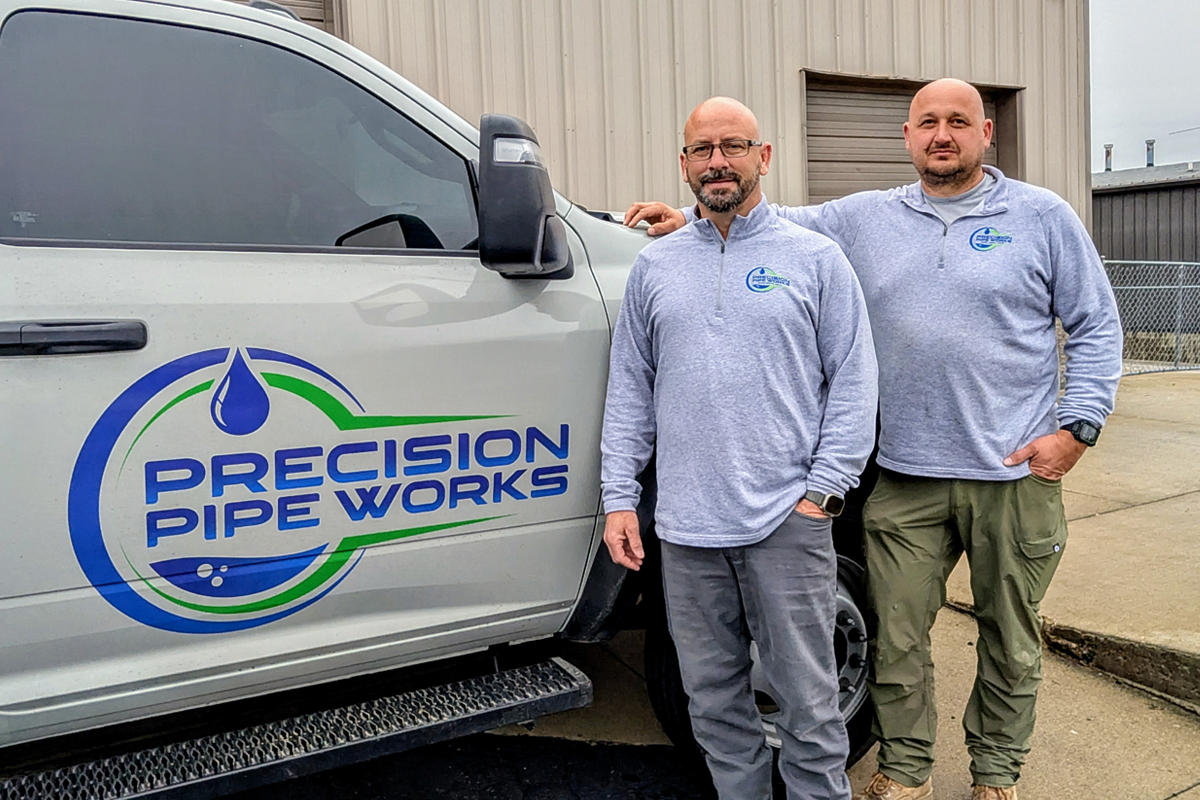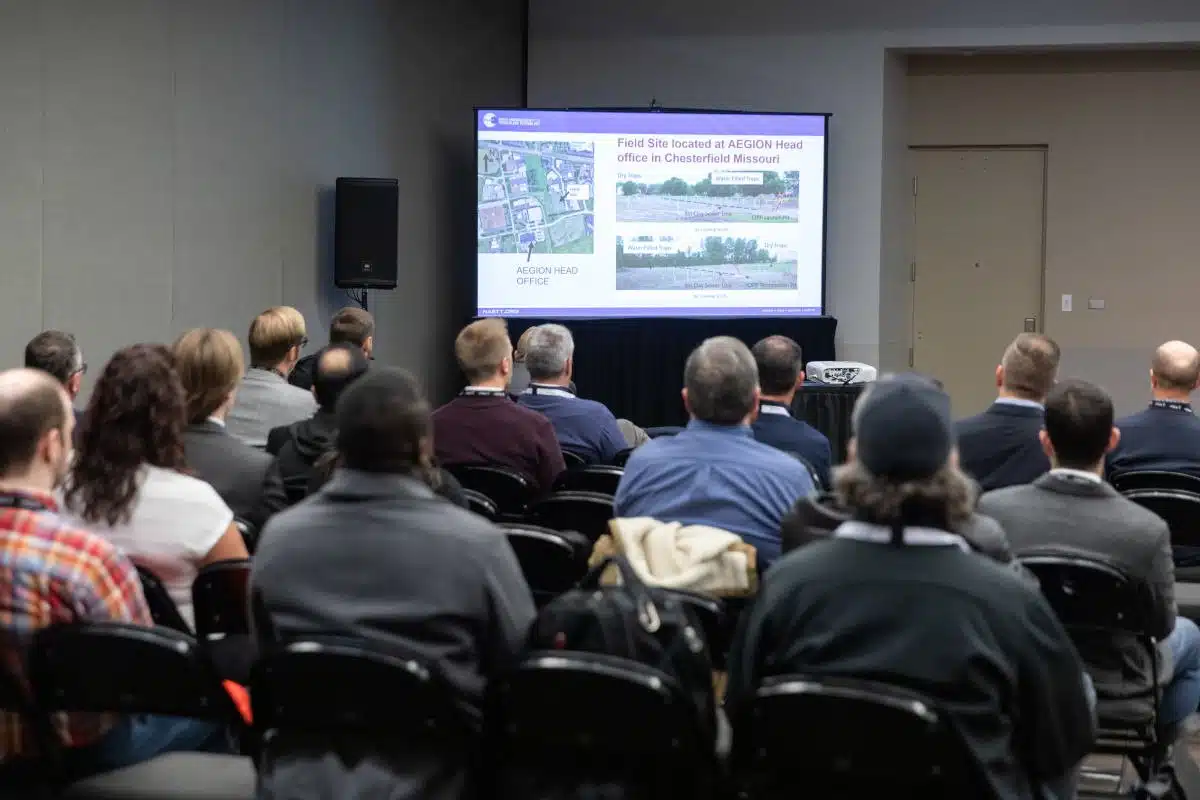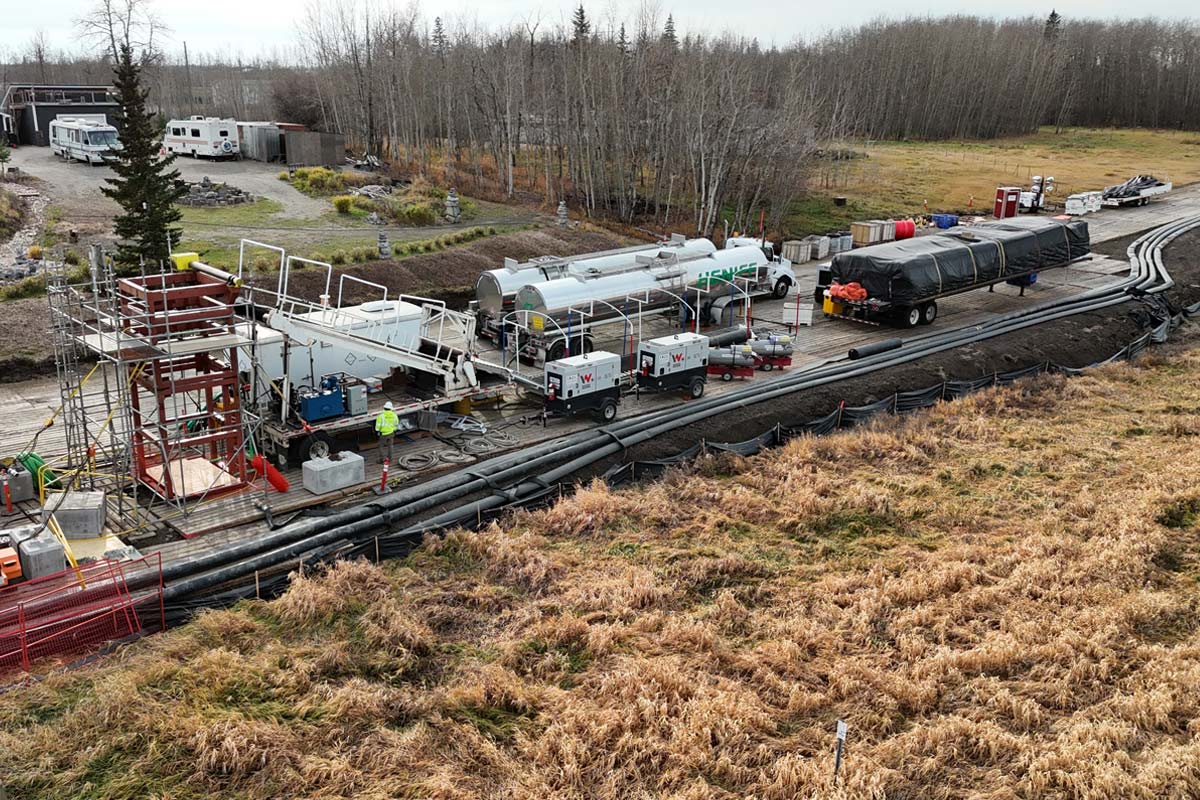
Capital Infrastructure Group Grows to Become a One-Stop Shop for Underground Construction Services
When Dave Beswick purchased Capital Sewer Services Inc. in 2016, he did so because he recognized an opportunity in the underground infrastructure construction space. He had the idea of building a vertically integrated company that could offer a one-stop shop to municipalities across Canada.
Formed in 1999, Capital Sewer Services grew to become a leading cured-in-place pipe (CIPP) service provider in the Greater Toronto Area (GTA).
As the industry grew across Canada, contracts became larger and more complex, requiring sub-contractor services that initially worked well for the most part. There were challenges, however, with coordination, safety and performance standards. As the complexity of the contracts and the need for additional specialty contractors continued to increase, the stage was set for what Capital was about to become.
Under Beswick’s vision and leadership in the first 18 months, “Capital grew and focused on vertical integration of all services that had previously been subcontracted out,” Beswick says.
RELATED: No Water Hazard Here: Bypass Pumps Keep Toronto Golf Course Open During Rehab Project
Flash forward to 2020 and Capital Infrastructure Group includes Capital Sewer Services, Capital Utility Services Inc., Utility Force Construction Inc., Services D’Egout Capital Inc. (its Quebec arm) and CEC Mechanical Ltd. The company recently opened a state-of-the-art facility in Vaughan, Ontario, bringing all its combined expertise under one roof.

Capital Infrastructure Group’s pipe lining services include mainline CIPP, lateral lining and UV-cured lining.
Suite of Services
In addition to the mainline cleaning and inspection work (which often provides the information for project tenders down the road), Capital Infrastructure Group’s trenchless offerings include mainline CIPP, ultraviolet lining, lateral lining, maintenance hole rehabilitation and glass reinforced plastic (GRP) lining services. Its civil construction division offers open-cut repairs, temporary road construction, temporary bridge construction, complete maintenance hole and chamber replacement, temporary bypass operations that include high-density polyethylene (HDPE) fusion services, pump and header assembly, temporary suction and discharge access excavation works and temporary shaft construction.
“All of our services are available and coordinated through our experienced project management team built over the last six years striving to provide the best in project planning, excellence of execution and delivering the highest quality products and services possible,” confirms Brian Ratchford, chief operating officer for Capital Sewer Services Inc. “Today, Capital employs more than 250 management and field personnel. People are our most valuable resource.
Maintaining a balance between experience and a need to learn, is one of many key elements to a successful well-balanced organizational team. Collectively, Capital Sewer Services retains more than 200 years of construction and trenchless technology experience.”
Having quality personnel is one piece of the project puzzle, the other is quality equipment. Capital Infrastructure Group boasts 260 pieces of rolling equipment.
“The company continually invests in its equipment to ensure there is not only sufficient capacity, but to also back-up units for when equipment must go down for preventative maintenance or mechanical failures occur. This approach ensures that production is not affected in the field and projects are completed on time,” says Beswick.

Because of Capital Infrastructure Group’s vertically integrated structure, the company is able to provide all of the ancillary services that are typically required on large trenchless sewer rehabilitation projects. This project included dewatering, maintenance hole installation and the construction of access roads.
Benefits of Vertical Integration
As noted above, the formation of Capital Infrastructure Group came at a time when projects in the Greater Toronto Area (GTA) were becoming larger and more complex and often incorporating several components. That includes projects that require more than one trenchless method or projects that require a mix of trenchless and open-cut work.
The benefit of Capital Infrastructure Group’s vertically integrated underground construction services was recently on display on a sewer line assessment emergency beneath an arterial road in Toronto.
What the Capital Infrastructure crew found, was a damaged line that needed emergency repair. With the City’s authorization, Capital mobilized its civil construction division, which came out and exposed the pipe. On exposing the pipe, Capital discovered what could have been a catastrophic situation beneath the road. The large-diameter storm water line separated and washed away a section of sanitary sewer below and threatened to create a sinkhole if left unchecked.
RELATED: Pipe Cleaning Contractor Profile – Capital Sewer Services
“This is a good look at our structure and how it all ties together and its ability to serve the client. We found this defect through one of our service contracts and because there was a potential for a sinkhole on an arterial road, we were able to dispatch a civil construction crew to repair this piece,” says Beswick.
Capital’s crews were able to trace the extent of the damage and repair the 300-mm diameter sanitary sewer line. These repair works included a full maintenance hole to maintenance hole reline of the damaged section of 1,050-mm storm sewer and returned the road to its original state.
“We were a one-stop shop to provide this service. It started with a camera contract and averted a potential disaster on a main road in Toronto,” Beswick says. “It wasn’t a case where [the City] had to call multiple service providers. They had to talk with one person. We handled all aspects of the repair which took place within a week and half.”
The relining portion of the project was further expedited because Capital Infrastructure Group has its own wet-out facility for its CIPP work — one of the few contractors in Canada with that capability.
“Larger projects [are starting to come out] encompassing all of the aspects that [Dave Beswick] mentioned. There was an opportunity for a company to step up and bring it under one umbrella,” says Ratchford. “That gives you complete control of the operation, one point of contact with clients and provides a significant advantage over the competition in that our approach brings all of these advantages together. Capital Infrastructure Group offers a wide range of services and problem-solving skills to our clients.”
Always Innovating
Since its formation as Capital Sewer Services and its growth into Capital Infrastructure Group, the company has always had an eye for innovation.
“Capital Infrastructure Group continues to re-evaluate its equipment fleet to ensure that we stay on the leading edge of advances that are made in installation gear, cleaning and inspection equipment, reamers, robotic cutters, steam and hot water units and installation technologies for mainline, lateral and manhole rehabilitation,” says Beswick. “We are constantly in search of new and innovative technologies that can be used to better serve specific site conditions. Today, there are various forms of CIPP, as well as a number of alternative means and methods [such as] GRP, geopolymer structural products and other evolving methods that are available for consideration when CIPP may not be a feasible option. CSS continues to search, review and when applicable, bring these technologies under our umbrella which is then used to increase the size of our technical envelope further enhancing the services we offer.”
One of the newest services – in part due to the increasing number of large-diameter work – is LiDAR and sonar inspection and 3D imaging capabilities. This allows crews to inspect larger trunk lines that have 30 to 50 per cent flow rates and provide the client with a detailed report of pipe condition and any debris that may be under the flow line. The high-quality deliverable is a detailed 3D examination of the asset. The company also uses these systems on its GRP work because it allows them to confirm that the size of the panels being installed will fit and negotiate any offsets, bends or obstructions associated with that installation.
“It is another service that, at this time, is in its early stages and is not readily available in these markets. There are only a couple players that do this work,” says Beswick.
On the horizon is the addition of spray-applied geopolymer lining. The technology, Ratchford says, is a niche market that is starting to emerge in the GTA on larger projects, especially on non-circular culverts and some large diameter and non-circular sanitary applications.
While the core of Capital Infrastructure’s work is in the GTA, the company looks at projects across Canada. Right now, there are projects in the works as far west as Winnipeg, throughout Ontario and as far east as Montreal. Beswick notes that with the consistent work in Quebec, the company plans to grow that office and establish a hub to service eastern Canada.
Continued Growth
What kind of trenchless work is coming up? Neither Beswick or Ratchford sees a slowing down of cleaning, inspection and repair of smaller diameter sewers. Where they project an uptick in the market is in the larger diameter trunk lines. These lines especially are buried deep beneath densely populated areas, thus favoring a trenchless approach.
“As the industry is starting to mature and some of the smaller diameter inventory has been rehabilitated, they are looking at the larger, deeper, more difficult to get to and technically challenging trunk lines,” Ratchford says. “They are finding that those lines are also in danger of failure.”
“I think that the trunk lines in most large municipalities are in early stages of rehab,” Beswick adds. “The cost savings associated with trenchless vs. replacement on those is astronomical.”
“I agree 100 per cent and if you actually start to think about the fact that the large trunk line work is being generated by just recent advances in inspection technologies, municipalities are just now discovering what state their trunk lines are in,” Ratchford says. “This is really in its infancy and if anything, it will continue to emerge as technology provides more detailed information. As that information becomes available bigger projects will be designed and let out to address those issues.”
RELATED: Canada’s Largest City Takes Its Greenness Underground
Because cities across Canada are working diligently to address their infrastructure issues and projects are getting larger – in overall scope, depth and size of pipe – the system owners are realizing the many benefits of trenchless. This, in turn, means that Capital Infrastructure Group is not slowing down, rather the company is ramping up for the many projects that lie ahead.
“There are a lot of exciting challenges coming and we’ve just seen the tip of the iceberg,” Ratchford says.
Trenchless Project Spotlight

In 2019, Capital Infrastructure Group completed a project for the City of Toronto that allowed all the facets of the company to shine, from pipe inspection to rehabilitation and restoration. The project was a rehabilitation of the Highland Creek sewer beneath Lawrence Avenue.
“It is probably one of the top five recent projects completed, in our industry, in Toronto,” says Ratchford. “It also emphasized the strengths…of bringing all of these different disciplines under one umbrella.”
The 2.4-m sewer was located approximately 18 m below Lawrence Avenue and accessing the pipe for the GRP sliplining operation required the creation of two access shafts. Other than the caisson work on the shafts, Capital Infrastructure’s civil construction division handled the construction on these access points, as well as the construction of bulkheads.
A project of this size and scope required a bypass of approximately 1 km. Using its in-house expertise, the company designed the bypass using hydraulic submersible pumps placed in the shaft. The crews also handled fusing the HDPE bypass piping and burying it below ground so traffic on Lawrence Avenue could be maintained. While the initial bypass setup worked, it was prone to clogging, which meant downtime for the sliplining crew. The design was quickly changed to above ground pumps with grinders in them to continue the work.
With the bypass pumping situation in order, crews – working only at night when flow was reduced – were able to slipline the sewer using GRP panels. Along the way, the crews encountered several bends and changes in direction. This allowed Capital Infrastructure to highlight the benefits of this style of sliplining offered through Channeline International. Undeterred, the crews completed the installation and grouting work without any hiccups.
Mike Kezdi is managing editor of Trenchless Technology Canada.




